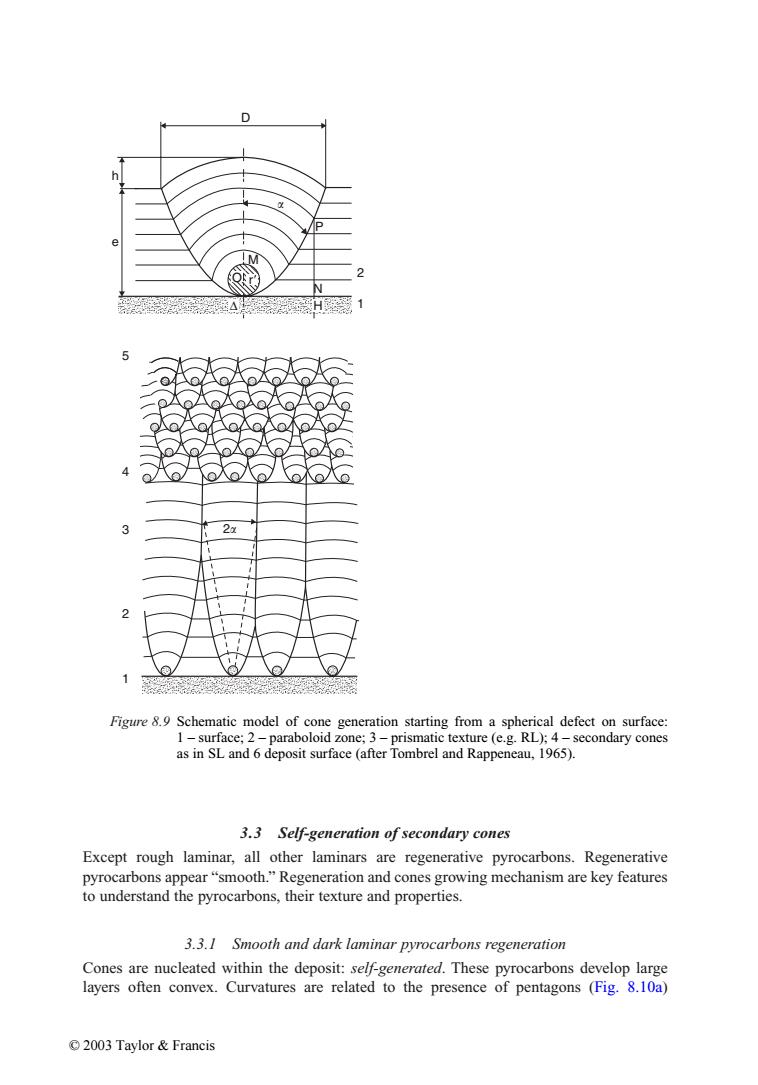正在加载图片...

0 H Figure 8.9 Schematic model of cone generation starting from a spherical defect on surface: 1-surface;2-paraboloid zone;3-prismatic texture (e.g.RL);4-secondary cones as in SL and 6 deposit surface (after Tombrel and Rappeneau,1965). 3.3 Self-generation of secondary cones Except rough laminar,all other laminars are regenerative pyrocarbons.Regenerative pyrocarbons appear"smooth."Regeneration and cones growing mechanism are key features to understand the pyrocarbons,their texture and properties. 3.3.1 Smooth and dark laminar pyrocarbons regeneration Cones are nucleated within the deposit:self-generated.These pyrocarbons develop large layers often convex.Curvatures are related to the presence of pentagons (Fig.8.10a) 2003 Taylor Francis3.3 Self-generation of secondary cones Except rough laminar, all other laminars are regenerative pyrocarbons. Regenerative pyrocarbons appear “smooth.” Regeneration and cones growing mechanism are key features to understand the pyrocarbons, their texture and properties. 3.3.1 Smooth and dark laminar pyrocarbons regeneration Cones are nucleated within the deposit: self-generated. These pyrocarbons develop large layers often convex. Curvatures are related to the presence of pentagons (Fig. 8.10a) Figure 8.9 Schematic model of cone generation starting from a spherical defect on surface: 1 – surface; 2 – paraboloid zone; 3 – prismatic texture (e.g. RL); 4 – secondary cones as in SL and 6 deposit surface (after Tombrel and Rappeneau, 1965). O r ∆ H N 5 4 3 2 1 1 2 P M D h e 2 © 2003 Taylor & Francis